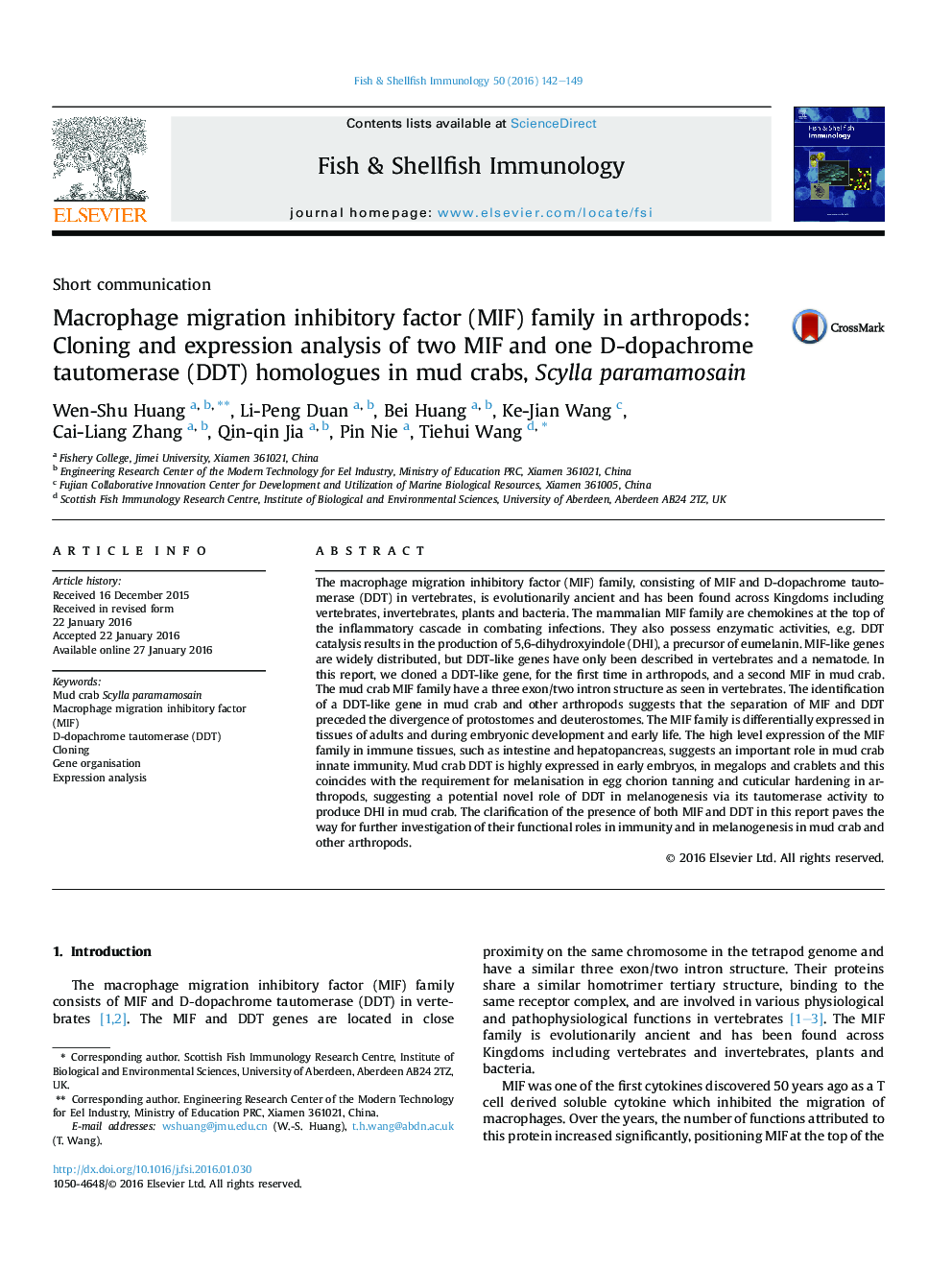| کد مقاله | کد نشریه | سال انتشار | مقاله انگلیسی | نسخه تمام متن |
|---|---|---|---|---|
| 2430701 | 1553624 | 2016 | 8 صفحه PDF | دانلود رایگان |

• The separation of MIF and DDT preceded the divergence of protostomes and deuterostomes.
• Two MIF paralogues and one DDT-like gene are present in the mud crab Scylla paramamosain.
• Mud crab MIF family members have a three exon/two intron structure.
• The MIF family is differentially expressed in tissues of adults and during development.
• The MIF family is highly expressed in immune tissues, intestine and hepatopancreas.
The macrophage migration inhibitory factor (MIF) family, consisting of MIF and D-dopachrome tautomerase (DDT) in vertebrates, is evolutionarily ancient and has been found across Kingdoms including vertebrates, invertebrates, plants and bacteria. The mammalian MIF family are chemokines at the top of the inflammatory cascade in combating infections. They also possess enzymatic activities, e.g. DDT catalysis results in the production of 5,6-dihydroxyindole (DHI), a precursor of eumelanin. MIF-like genes are widely distributed, but DDT-like genes have only been described in vertebrates and a nematode. In this report, we cloned a DDT-like gene, for the first time in arthropods, and a second MIF in mud crab. The mud crab MIF family have a three exon/two intron structure as seen in vertebrates. The identification of a DDT-like gene in mud crab and other arthropods suggests that the separation of MIF and DDT preceded the divergence of protostomes and deuterostomes. The MIF family is differentially expressed in tissues of adults and during embryonic development and early life. The high level expression of the MIF family in immune tissues, such as intestine and hepatopancreas, suggests an important role in mud crab innate immunity. Mud crab DDT is highly expressed in early embryos, in megalops and crablets and this coincides with the requirement for melanisation in egg chorion tanning and cuticular hardening in arthropods, suggesting a potential novel role of DDT in melanogenesis via its tautomerase activity to produce DHI in mud crab. The clarification of the presence of both MIF and DDT in this report paves the way for further investigation of their functional roles in immunity and in melanogenesis in mud crab and other arthropods.
Journal: Fish & Shellfish Immunology - Volume 50, March 2016, Pages 142–149